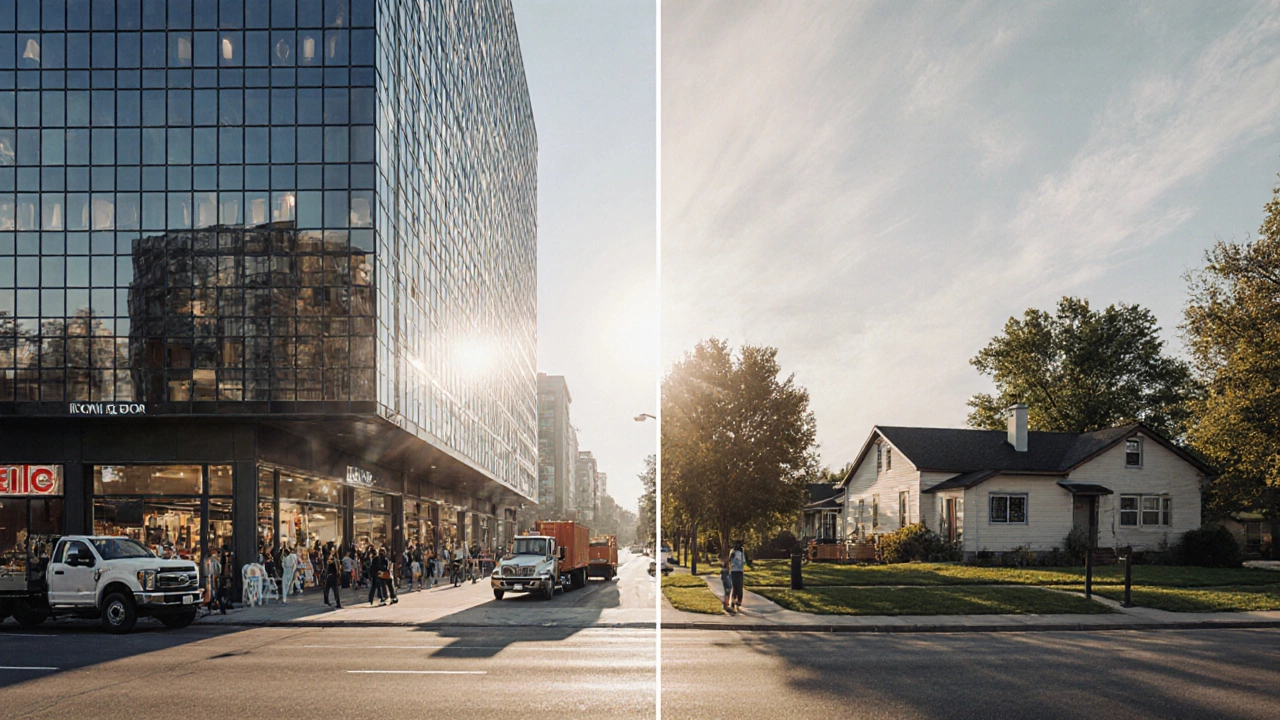Commercial construction vs non commercial: Key differences explained
Learn the key differences between commercial and non‑commercial construction, covering purpose, financing, regulations, design, timelines, and stakeholder roles.
When you hear commercial construction, building projects designed for business use like offices, retail spaces, or warehouses. Also known as non-residential construction, it focuses on high-volume use, strict regulations, and long-term durability. On the other side, residential construction, projects built for people to live in—single-family homes, apartments, condos. Also known as housing construction, it prioritizes comfort, personalization, and faster turnarounds. These two aren’t just different in size—they follow entirely different rules, timelines, and material standards.
The biggest difference? Building codes. Commercial buildings must meet fire safety, accessibility, and load-bearing rules that residential ones don’t. A single office tower might need 4 fire exits, sprinklers on every floor, and elevator access for disabled users. A house? One exit is usually enough. That’s why you’ll never see a residential contractor handling a retail center—they don’t have the permits, insurance, or experience. And then there’s cost. Commercial projects often run 3 to 5 times more per square foot than homes, not just because they’re bigger, but because they need steel frames, heavy-duty HVAC, and industrial-grade wiring. Even the construction timelines, how long a project takes from ground-breaking to handover are worlds apart. A house might be done in 6 months. A small office building? 12 to 18 months. And don’t forget the contractors. Residential work is often done by local crews you hire directly. Commercial jobs? You’re dealing with general contractors who manage dozens of specialized subcontractors—electricians, plumbers, HVAC techs—all working under strict schedules.
Materials matter too. Commercial buildings use more concrete, steel, and fire-rated drywall. Residential leans on wood framing, vinyl siding, and standard insulation. That’s why galvanized wire—strong, rust-resistant, and built for heavy-duty use—is common in commercial sites but rarely needed in a backyard shed. The same wire that holds rebar in a warehouse foundation is the same one that anchors fencing around a housing complex. It’s not about the product—it’s about how it’s used.
If you’re planning a project, whether you’re a homeowner thinking of adding a rental unit or a business owner looking to expand, knowing the difference saves time, money, and headaches. You don’t want to hire a home builder for a retail space—or worse, try to use residential codes on a commercial build. That’s how you end up with failed inspections, delayed permits, and costly reworks. The posts below break down real-world examples: from mixed-use buildings that blend both types, to how foundation repair costs vary between a house and a strip mall, to why the same wire product behaves differently in each setting. You’ll find answers on costs, timelines, materials, and the hidden rules no one tells you about until it’s too late.

21 October
Learn the key differences between commercial and non‑commercial construction, covering purpose, financing, regulations, design, timelines, and stakeholder roles.